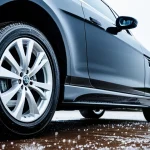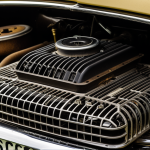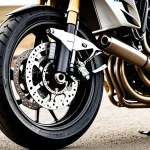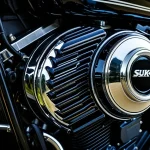Understanding Hybrid Vehicles in Winter Conditions
Hybrid vehicles offer a unique blend of fuel efficiency and eco-friendliness. However, winter driving can pose particular challenges. One important factor is hybrid technology. In cold weather, hybrids must efficiently manage both electric and combustion power sources. Common challenges include reduced battery performance and longer warm-up times.
Cold temperatures can significantly affect fuel efficiency in hybrid vehicles. Batteries lose capacity in the cold, resulting in reduced electric range and greater reliance on the gasoline engine. This shift can lead to higher fuel consumption, as the engine compensates for the battery’s limited performance.
Dans le meme genre : Enhancing Lane-Keeping Assist: Tailoring Vehicle Configurations for Optimal Performance on UK Rural Roads
Furthermore, freezing conditions impact tire traction, requiring careful management of both power sources for optimal winter driving. The internal combustion engine may need to run more frequently in order to generate heat, adding to the fuel usage.
To maximize benefits in cold weather, drivers should be aware of how hybrid technology adapts to these conditions and adjust their driving style accordingly. Understanding these factors can lead to smarter, more efficient, and safer winter travel. Because of this, hybrid vehicles maintain their relevance in providing reliable performance even during challenging winter months.
A lire aussi : Expert Strategies for Preventing Overheating in Your Vintage British Convertible: Top Cooling Tips Revealed!
Maintenance Tips for Hybrid Vehicles in Winter
Regular maintenance of hybrid vehicles is crucial, especially in winter. Cold conditions can particularly strain battery performance. To ensure optimal operation, battery checks are vital. Regular inspections help prevent unexpected failures and keep energy output efficient. It’s advisable to schedule check-ups with a certified technician who can assess for any depletion in the battery’s capacity.
Tire health is another key factor. Properly inflated tires ensure better traction and control on icy roads. Winter tires are recommended as they are designed to handle low temperatures effectively. Checking inflation levels before long journeys can also prevent uneven tread wear and enhance fuel efficiency.
Another essential aspect is checking and maintaining vehicle fluids. Ensure the coolant and antifreeze levels are appropriate to protect the engine in sub-zero temperatures. Brake fluid, oil, and windshield washer fluid with antifreeze properties should be topped up and checked regularly to handle the rigours of winter driving.
In sum, routine maintenance helps maximize a hybrid vehicle’s durability and performance during the colder months. By focusing on these areas, drivers can sustain their hybrid’s reliability and efficiency throughout winter.
Driving Techniques to Enhance Fuel Efficiency
Understanding how certain driving techniques can improve fuel efficiency in winter is crucial for hybrid vehicle owners. When it comes to enhancing fuel consumption, smooth and gradual acceleration and braking play a significant role. This approach reduces energy wastage, allowing the vehicle’s electric and combustion systems to work more efficiently.
Another technique is maximizing the use of regenerative braking. For hybrid vehicles, this feature recaptures energy that is usually lost during braking, directing it back into the battery. By easing off the accelerator early and coasting to a stop, drivers can increase regenerative effects, subsequently extending the electric range.
Maintaining a consistent speed is also vital. Frequent speed changes can increase fuel usage, while a steady pace can optimise vehicle performance. Avoiding unnecessary idling is recommended, as it leads to fuel loss and decreased efficiency, especially in cold conditions where the engine operates frequently to stay warm.
Implementing these techniques not only conserves fuel but extends the hybrid’s capacity to perform optimally throughout the winter. With mindful driving practices, hybrid owners can enjoy improved energy management and minimize environmental impact.
Fuel-Saving Strategies for Winter Driving
Winter driving demands strategic planning to optimize fuel efficiency in hybrid vehicles. Careful trip planning can significantly reduce fuel consumption. By consolidating errands into a single trip or selecting routes with less traffic and fewer stops, drivers can minimize the energy used for acceleration and idling. Opting for clear roads, where traffic flow is steady, also aids in maintaining consistent speeds, a technique known to be beneficial for fuel economy.
Utilizing eco modes is another effective approach. Many hybrids feature settings that prioritize energy conservation, adjusting throttle response and electricity use to enhance efficiency. Engaging these modes during cold weather can offset the increased fuel demands caused by low temperatures. Additionally, leveraging features like heated seats instead of cranking up the cabin heater can save energy, prolonging battery life and maintaining more electric range.
Proper winter gear is paramount in reducing the vehicle’s load. By removing unnecessary items or heavy equipment stored in the car, drivers can further decrease fuel consumption. This strategy ensures that the car remains light and agile, fostering improved performance even under challenging winter conditions.
Utilizing Technology for Efficiency
Embracing hybrid technology can substantially improve driving efficiency in winter. Advanced apps and tools have emerged, providing insights into driving habits and fuel consumption. These tools guide drivers in optimizing their vehicle’s performance by analyzing trip patterns and offering suggestions for improvement.
The role of hybrid dashboard features becomes crucial during cold weather. These systems provide real-time data on power distribution between the electric motor and combustion engine, allowing drivers to make informed decisions about energy management. Keeping an eye on this information can help maintain ideal efficiency, even in frigid conditions.
Regular updates and upgrades to vehicle software can enhance performance during winter months. Manufacturers often release improvements that address cold-weather challenges, such as optimized battery usage and improved powertrain efficiency.
Additionally, adopting new technology solutions can prepare owners for diverse winter driving scenarios, ultimately extending vehicle life and maintaining efficiency. Investing time in exploring these tools and updates ensures that hybrid vehicles remain a robust and reliable choice throughout the winter season.









